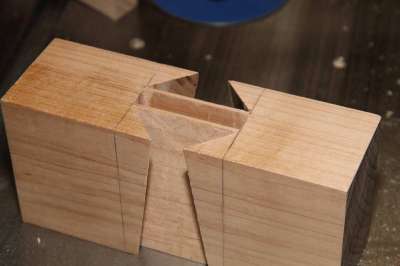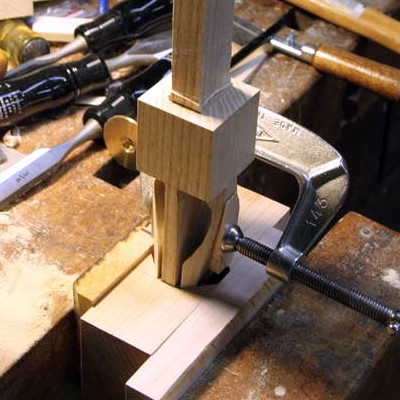Dovetails are a wedge-shaped joint found in woodworking. The wedge makes for strong joinery because a force that tries to pull it apart also increases the friction on the joint. This mallet has dovetails on either side that keep the head from flying off, but there’s also a through tenon in the center. This is an impossible joint as there’s no way to slide the mallet head onto the handle. The two pieces of wood must have grown that way!
As with everything, there’s a trick here, let it scratch your brain for a while before reading on… if you can guess how it’s done it’ll be very satisfying when you confirm your theory. Both the trick of the impossible mallet and the superb hand joinery are shown off in this video from the [Third Coast Craftsman].
The trick comes in the form of internal voids hidden from view once the two pieces of the mallet have been assembled. The through tenon is exactly as you’d expect: a strait tenon slides into a straight mortise in the mallet. The dovetails to either side of the handle and the pockets they mate with in the mallet head are not at all what you’d expect. The edges of the dovetail have been chamfered at 45 degrees so you can’t pull them to the outside of the mallet as you slide them into place. The opposite is the actual trick. Each of the dovetails bends inward until a ramp at the very end of the mallet pocket pushes it back into place.


The impossible mallet isn’t a new concept and stands as a formidable challenge for any accomplished woodworker. The images above are of [Jim Guilford’s] impossible mallet. Here the trick is fully exposed, showing the dovetail tenons of the handle clamped together as it is driven into place. Two things are striking here; the joints cannot be tested and must be perfect before assembly, and there is a real chance the tenons will break or the mallet head will split apart from the force of assembly. This project will test your courage as much as it will your patience.
No comments:
Post a Comment